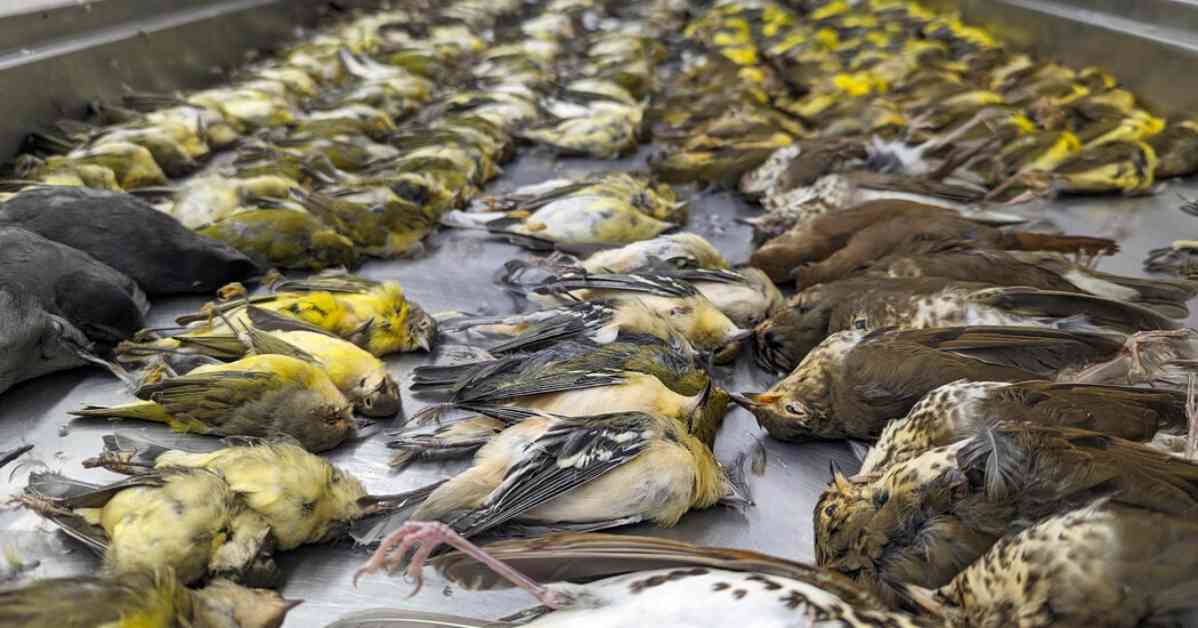On a night in October, a large group of birds flew over Chicago, capturing the attention of bird watchers with their colors illuminating the sky. However, the following day brought a tragic sight as nearly a thousand birds were found dead outside a building along Lake Michigan, with more scattered throughout the city streets.
Migration experts attributed the mass deaths to a combination of factors, including the lights from buildings disorienting the birds as they migrated overnight on October 4th. Since then, there have been improvements made at the McCormick Place Lakeside Center, where the highest number of bird deaths occurred. Despite these changes, advocates for bird safety are calling for more widespread measures to protect birds across the city.
Suggestions for protecting birds include treating windows with bird-friendly film, using shutters or drapes to block windows, and turning off decorative lighting at night during migration seasons. Judy Pollock, president of the Chicago Bird Alliance, commended the changes at McCormick Place but emphasized the need for other buildings to address their windows as well.
The Chicago Bird Collision Monitors, a volunteer group dedicated to recovering dead and injured birds, reported finding 1,600 birds in a downtown area smaller than two square miles on October 5th. However, the group’s director, Annette Prince, mentioned that there could have been thousands more birds that were not accounted for, as the volunteers were unable to reach every area and birds may have collided with buildings after their monitoring efforts.
The incident in Chicago highlights the importance of taking steps to protect migrating birds, especially in urban areas where the risk of collisions with buildings is high. By implementing bird-friendly measures such as window treatments and reducing nighttime lighting, cities can help prevent future mass bird die-offs and create safer environments for avian populations.
As bird enthusiasts and conservationists continue to advocate for bird safety, it is crucial for communities to prioritize the well-being of these vital creatures and work towards creating a more bird-friendly urban landscape. By raising awareness and implementing practical solutions, we can ensure that incidents like the mass bird die-off in Chicago are reduced and ultimately prevented in the future.




